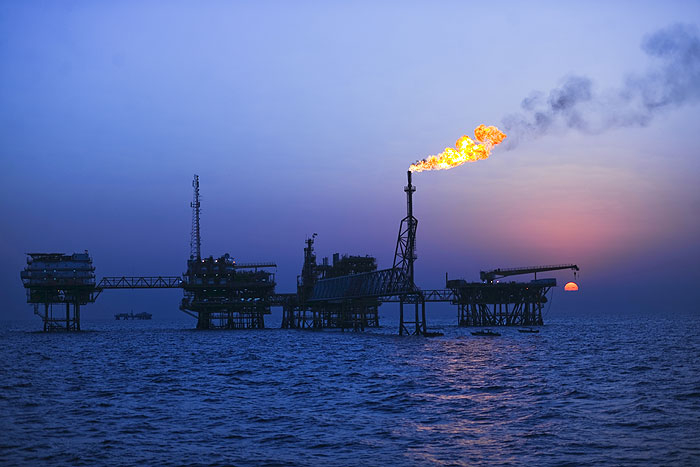With the completion of new phases of the giant offshore South Pars gas field, including SP13, SP14, SP 22-24 and SP19, National Iranian Oil Company (NIOC) has decided to establish an export and service terminal in Tombak in Pars II, where eight refinery phases and one liquefied natural gas (LNG) project are located. The idea is aimed at exporting liquefied petroleum gas (LPG) and sulfur produced by South Pars. According to manager of oil and gas projects' logistics at the Pars Oil and Gas Company (POGC), Tombak will in addition to exporting products, help provide services to vessels navigating at the port. It would be able to export petrochemical products from plants in Kangan and the refined products of the Siraf refineries. With a depth of 37 meters, Tombak Port is the deepest port in Iran and the Persian Gulf region.
Iran is currently recovering 570 mcm/d of gas from South Pars. Development of South Pars is under way. Iran LNG and SP 11, SP12, SP13, SP14, SP19, SP22, SP23 and SP24 are located in Pars II zone (Kangan) covering 16,000 ha of land.
Moheyoddin Jafari, POGC oil and gas projects' logistics manager, has talked with" Iran Petroleum" about Tombak and its potential.
How come NIOC has decided to build an export and service port at Tombak?
As you know, South Pars phases are being completed one after another and its story will come to an end soon. But SP11, SP12, SP13, SP14, SP19, SP22, SP23 and SP24 and Iran LNG plant are located in Pars II zone. Some of these phases came online under the 11th administration and the rest is being completed. That is why a port is planned to be constructed at Tombak in order to export LPG from the foregoing phases. Furthermore, sulfur is a byproduct of sweetening operation in all refinery phases. The refining complexes located in Pars I zone in Assaluyeh deliver sulfur via the Pars Port Complex. However, due to the lack of a port to export sulfur produced at Pars II zone, they have to take a long distance to transfer the sulfur by land. The startup of Tombak port will facilitate the export of sulfur from the Pars II refineries.
When was the agreement signed for the construction of this port?
In 2014 an agreement was signed with Iranian contractors for the construction of the Tombak port and export port under an EPC contract. The project is now under way. It is expected to come on-stream in 2019. Iranian companies also did engineering design at the port; however, international companies were involved in the port engineering section.
Known as the deepest Iranian port in the Persian Gulf with a 37-meter depth, it has three jetties; two LPG jetties for LPG exports having each capacity to berth vessels carrying 5,000 to 50,000 tonnes of LPG and one sulfur export jetty able to load 14,000 tonnes a day of sulfur. According to plans, the LPG jetty is to come online by next March to allow LPG exports.
Is this port designed to export only LPG and sulfur?
The main mission assigned to this port is sulfur and LGP export; however, Tombak is an export and service port, which would be able to provide all necessary services to vessels including container services and bunkering. Of course, providing services to vessels will be at the discretion of NIOC. Tombak is the only NIOC port in the Pars II zone. Therefore, it is able to complete projects and provide any services for the entry of products and exports. But for the time being, it is only used for sulfur and LPG exports. However, in the future once Siraf refineries become operational; it may start exporting refined products. It may also help export petrochemicals from plants located in Pars II zone.
Could you update us about the supply of necessary commodities in this port?
The necessary commodities and equipment have been purchased for the port and the commodities have been moved to stores. There is no problem for operating different sections of this port. Furthermore, orders have been placed with domestic manufacturers for most of commodities needed in this port.
Is it the first port in which caisson material has been used?
Yes, that is true. Generally at Iran's ports, buttress and topdrive are often used in the construction of jetties, but due to low depth of water in Tombak Port and due to shortage of suitable stone resources, caisson concrete materials were used. That is new experience and it is the first jetty and waterbreak in which such materials are used. The western waterbreak or the main waterbreak has a cubic structure, whose stone section is complete, while its caisson section is under construction. The eastern waterbreak is smaller in size and is totally rock core.
Courtesy of Iran Petroleum


Your Comment